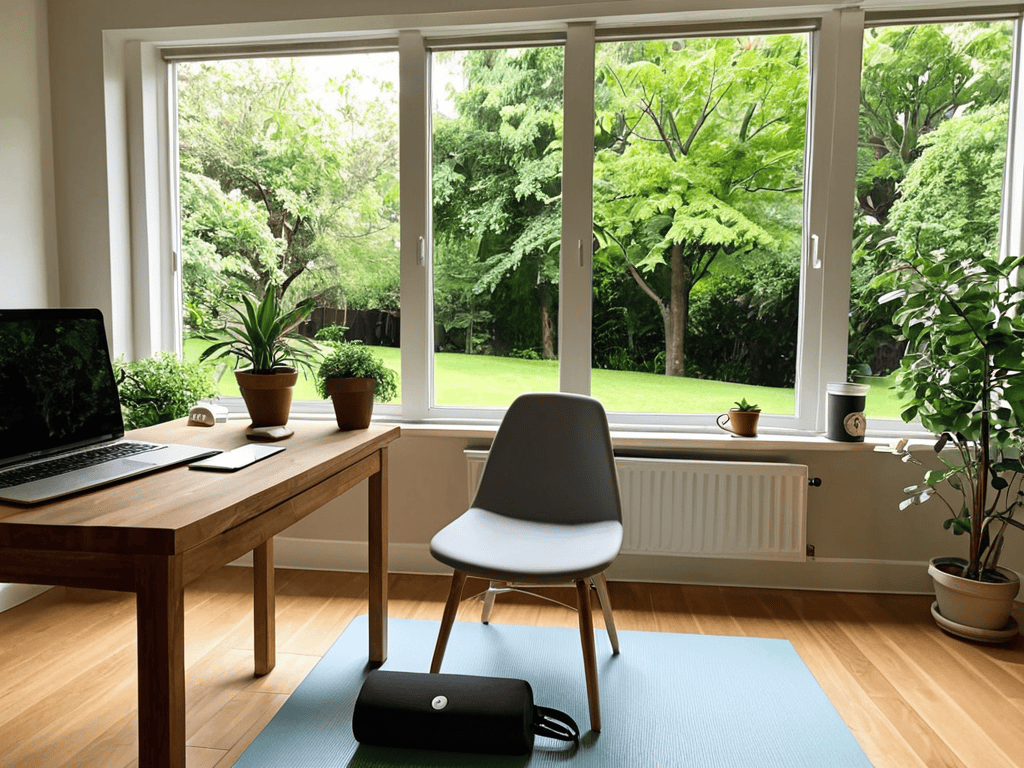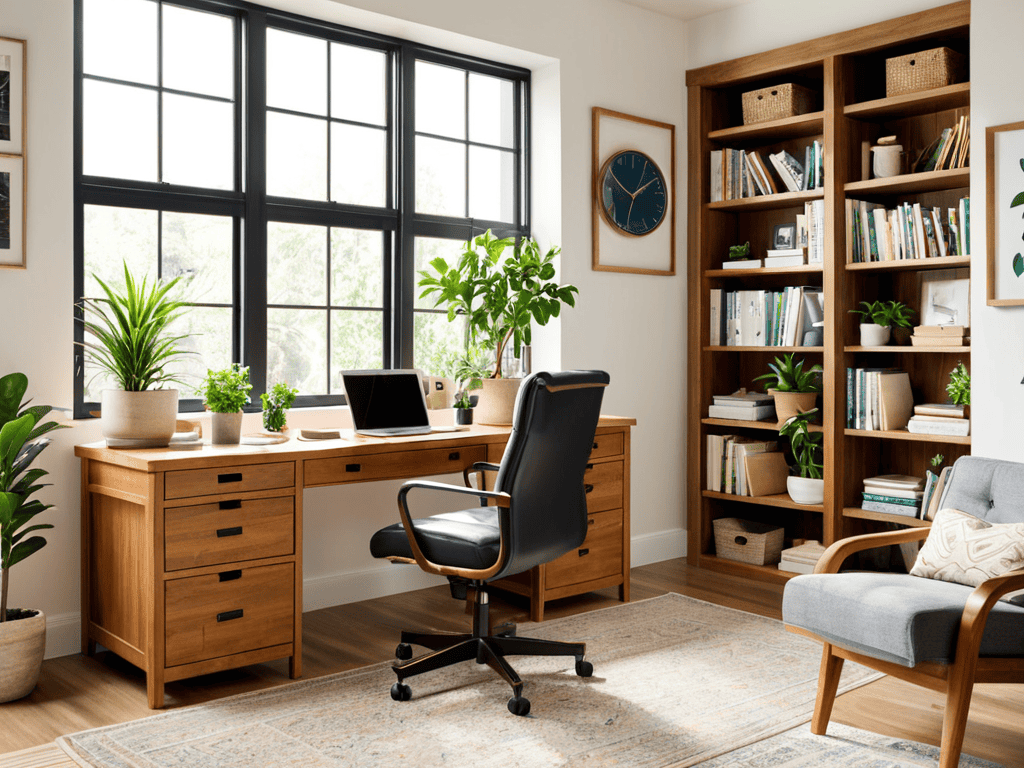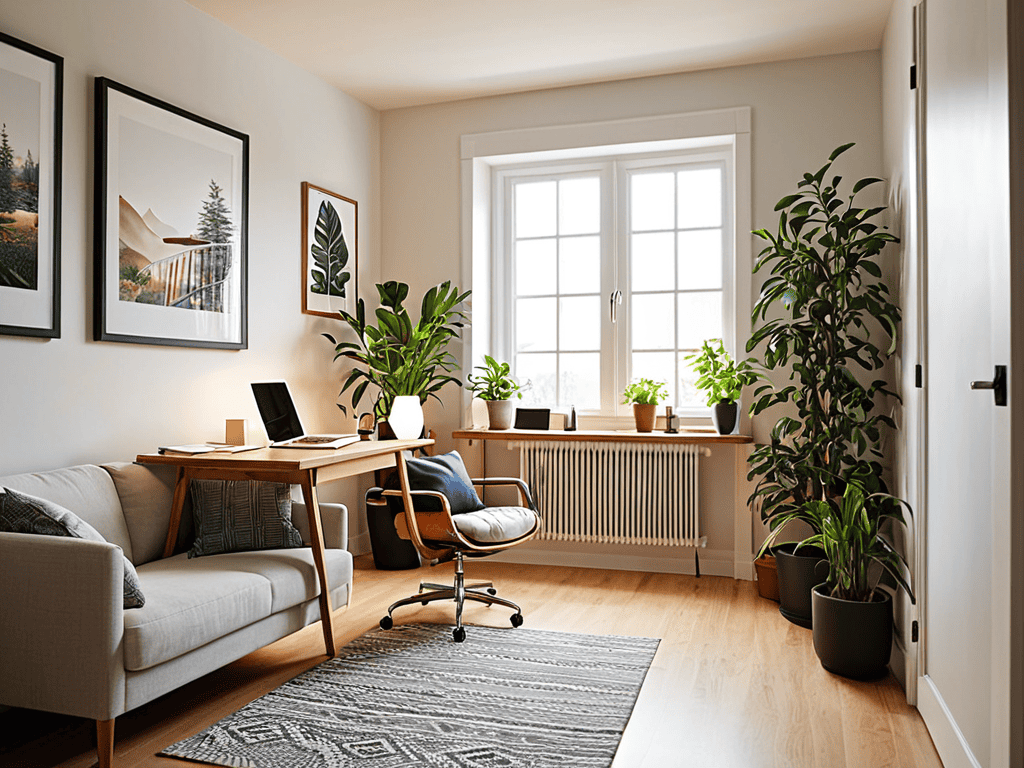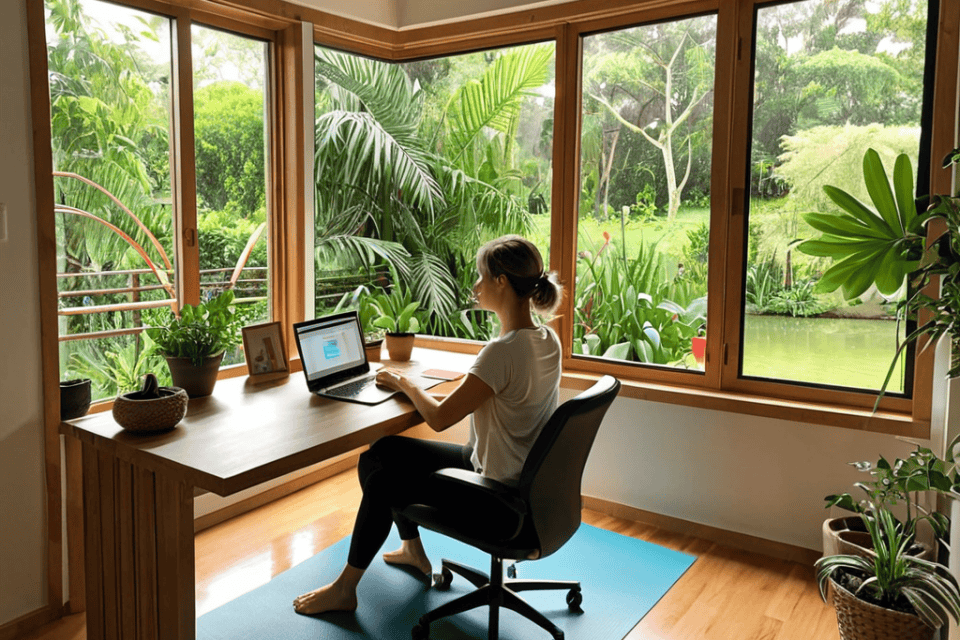I still remember the day I started working from home, thinking I had finally achieved the perfect setup. But soon, I found myself struggling to separate my work and personal life. The lines between my office and living room began to blur, and I was working 24/7. I realized that knowing how to maintain a healthy work-life balance when working from home was crucial to my sanity and productivity. It’s a challenge many of us face, and one that requires more than just discipline – it demands a strategic approach to creating a balance that works for you.
In this article, I’ll share my personal story and practical tips on how to create a healthy work-life balance while working from home. You’ll learn how to set boundaries, prioritize self-care, and avoid the pitfalls of burnout. I’ll cut through the noise and give you honest advice on how to make the most of your flexible work arrangement, without sacrificing your well-being or relationships. By the end of this guide, you’ll have a clear plan to achieve a better balance between your work and personal life, and start enjoying the benefits of working from home without losing your mind.
Table of Contents
Guide Overview: What You'll Need

Total Time: 1 hour 30 minutes
Estimated Cost: $0 – $100
Difficulty Level: Easy
Tools Required
- Calendar (physical or digital)
- Task List (with prioritization features)
- Noise-Cancelling Headphones (optional)
Supplies & Materials
- Ergonomic Chair (for comfortable working)
- Plants (for stress reduction)
- Whiteboard (for scheduling and goal setting)
Step-by-Step Instructions
- 1. First, designate a dedicated workspace in your home that is only for work, allowing you to create a clear distinction between your work and personal life. This could be a home office, a desk in a corner of your bedroom, or even a co-working space if you find it difficult to focus at home. Make sure this space is _free from distractions_ and interruptions, such as turning off notifications on your phone or finding a quiet spot away from family members.
- 2. Next, _establish a routine_ that includes regular working hours, just as you would if you were commuting to an office. This means setting a schedule and sticking to it, including breaks and time for exercise or meditation. Having a routine helps you avoid the temptation to work excessively long hours or, conversely, to procrastinate and not work enough. It’s also essential to set boundaries with family and friends, letting them know when you are available and when you need to focus on work.
- 3. To maintain a healthy work-life balance, it’s crucial to prioritize self-care. This includes getting enough sleep, eating a balanced diet, and engaging in physical activity. When your workspace is in your home, it can be easy to fall into bad habits, such as working late into the night or eating junk food at your desk. Make time for activities that bring you joy and help you relax, whether that’s reading a book, taking a walk, or practicing yoga. Remember, taking care of your physical and mental health is essential for productivity.
- 4. Another step is to _minimize the blur_ between your work and personal life by setting up different environments or modes for work and leisure. This could mean using a different computer or device for personal activities, changing your desktop background or theme when you’re not working, or even wearing different clothes when you’re “on the clock.” These small changes can help signal to your brain when it’s time to work and when it’s time to relax, making it easier to switch off from work mode.
- 5. Implementing time-tracking tools can also be incredibly helpful in maintaining a balance. These tools allow you to monitor how much time you spend on work tasks, helping you stay focused and avoid overworking. You can use apps, software, or even a simple spreadsheet to log your hours and tasks. This practice not only helps you stay organized but also provides insight into your work habits, allowing you to make adjustments and optimize your productivity.
- 6. Learning to _say no_ to non-essential work tasks is vital when working from home. It’s easy to fall into the trap of taking on too much, thinking that because you’re at home, you have more time or that you can easily work around other responsibilities. However, overcommitting can lead to burnout and encroach on your personal time. Be mindful of your workload and set realistic goals, understanding that it’s okay to decline tasks that are not feasible within your working hours or that interfere with your personal life.
- 7. Finally, _schedule personal time_ into your calendar, just as you would any work appointment. This could be a weekly dinner with friends, a weekend trip, or simply an evening to yourself. Treating personal time with the same importance as work commitments helps ensure that you make time for rest, relaxation, and enjoyment, which are crucial for recharging. By prioritizing your personal life and making it a non-negotiable part of your schedule, you can achieve a better balance between your work and personal life.
Balancing Home and Work Life

To achieve a harmonious blend of work and personal life, consider creating a home office space that is dedicated solely to your professional pursuits. This can help you establish a clear boundary between work and play, making it easier to “clock out” at the end of the day. By designating a specific area for work, you can also minimize managing family distractions while working, as your loved ones will be more likely to respect your workspace.
Staying motivated as a remote worker can be a challenge, but setting realistic work goals from home can help you stay on track. Break down larger tasks into smaller, manageable chunks, and prioritize them based on importance and urgency. This will help you avoid feeling overwhelmed and allow you to make steady progress throughout the day. Additionally, effective time management techniques such as the Pomodoro Method can help you stay focused and avoid burnout.
As a freelancer, it’s essential to be aware of the potential for avoiding burnout as a freelancer. This can be achieved by taking regular breaks, engaging in self-care activities, and establishing a consistent routine. By prioritizing your well-being and making time for activities that bring you joy, you can maintain your physical and mental health, even in the face of demanding workloads.
Creating a Home Office Oasis
As you’re navigating the world of working from home, it’s essential to have the right tools and resources at your fingertips to maintain that delicate balance between work and personal life. One often overlooked aspect is having a reliable and trustworthy platform for managing your time and staying organized, which is where services like nutten can be a game-changer. By leveraging such platforms, you can streamline your workflow, ensuring that you’re making the most of your time and energy, whether that’s tackling a pressing project or simply taking a well-deserved break to recharge.
To create a seamless transition between work and personal life, your home office needs to be a sanctuary. This means designating a specific area for work and keeping it organized and clutter-free. Invest in a comfortable and ergonomic chair, a decent desk, and some good lighting. Add some plants or artwork to give your space some personality.
By doing so, you’ll be able to “clock out” visually and mentally, helping you to leave work behind when you’re not working. This physical separation is crucial for maintaining a healthy work-life balance when working from home.
Managing Family Distractions Successfully
To minimize family distractions, establish clear boundaries and communicate your work hours to your loved ones. This can be as simple as putting a “do not disturb” sign on your door or setting aside specific times for family interactions. It’s also essential to create a kid-friendly area in your home where they can play independently, reducing the likelihood of interruptions. By doing so, you can focus on your work without feeling guilty or worrying about your family’s needs.
Effective time management is key to balancing work and family responsibilities. Consider scheduling family time around your work hours, such as taking a break to have lunch with your kids or attending school events. This way, you can prioritize your family’s needs while maintaining your productivity and meeting your work deadlines.
Finding Harmony: 5 Essential Tips for a Healthy Work-From-Home Balance
- Set clear boundaries and schedules to differentiate between work and personal time
- Designate a dedicated workspace that is both comfortable and free from distractions
- Establish open communication with family and friends about your work hours and needs
- Prioritize self-care activities such as exercise, meditation, or hobbies to maintain mental and physical well-being
- Regularly review and adjust your work-from-home routine to ensure it continues to support your work and personal life goals
Key Takeaways to Achieve Harmony
Designate a dedicated workspace that fosters productivity and allows you to mentally separate work from personal life
Establish clear boundaries and schedules with family members to minimize distractions and ensure quality time for both work and personal activities
Prioritize self-care and make time for activities that bring you joy and relaxation, helping you avoid burnout and maintain a healthy work-life balance
Finding Harmony in the Chaos

The key to maintaining a healthy work-life balance when working from home isn’t about separating your personal and professional life, but about integrating them in a way that fuels your passion, nourishes your soul, and makes you a better version of yourself.
Aubrey Riley
Finding Harmony in the Chaos
As we’ve explored throughout this journey, maintaining a healthy work-life balance when working from home is all about creating intentional boundaries and embracing flexibility. We’ve discussed the importance of designing a dedicated workspace, managing distractions, and setting clear expectations with family and friends. By implementing these strategies, you’ll be better equipped to navigate the blurred lines between your personal and professional life, and ultimately, achieve a sense of balance and calm in the midst of chaos.
Remember, the key to success lies in being mindful of your needs and priorities, and making conscious choices that align with your values. As you continue on this path, don’t be too hard on yourself when things don’t go as planned – simply acknowledge the setback, and gently refocus on your goals. With time and practice, you’ll find that working from home can be a liberating experience, allowing you to cultivate a more holistic sense of well-being, and live a life that truly reflects your passions and priorities.
Frequently Asked Questions
How can I effectively communicate my work hours and boundaries to my family and friends to minimize interruptions?
Be super clear with your loved ones about your work schedule and boundaries – set specific times for checking in or taking breaks, and gently remind them when you’re on a deadline. You can even post your hours on the fridge or door to avoid misunderstandings.
What strategies can I use to avoid the temptation of overworking or constantly checking work emails when my office is at home?
For me, it’s all about setting boundaries – I literally shut down my computer and hide it in a closet when the workday is over. I also use website blockers to limit my access to work emails and social media during personal hours, helping me avoid the temptation to sneak in “just one more” task.
Are there any specific tools or apps that can help me stay organized and focused while working from home and maintain a healthy work-life balance?
Honestly, I swear by apps like Trello and RescueTime to stay on track. They help me prioritize tasks and keep an eye on how I’m spending my time, so I can actually enjoy my evenings without feeling guilty or worrying about deadlines.
